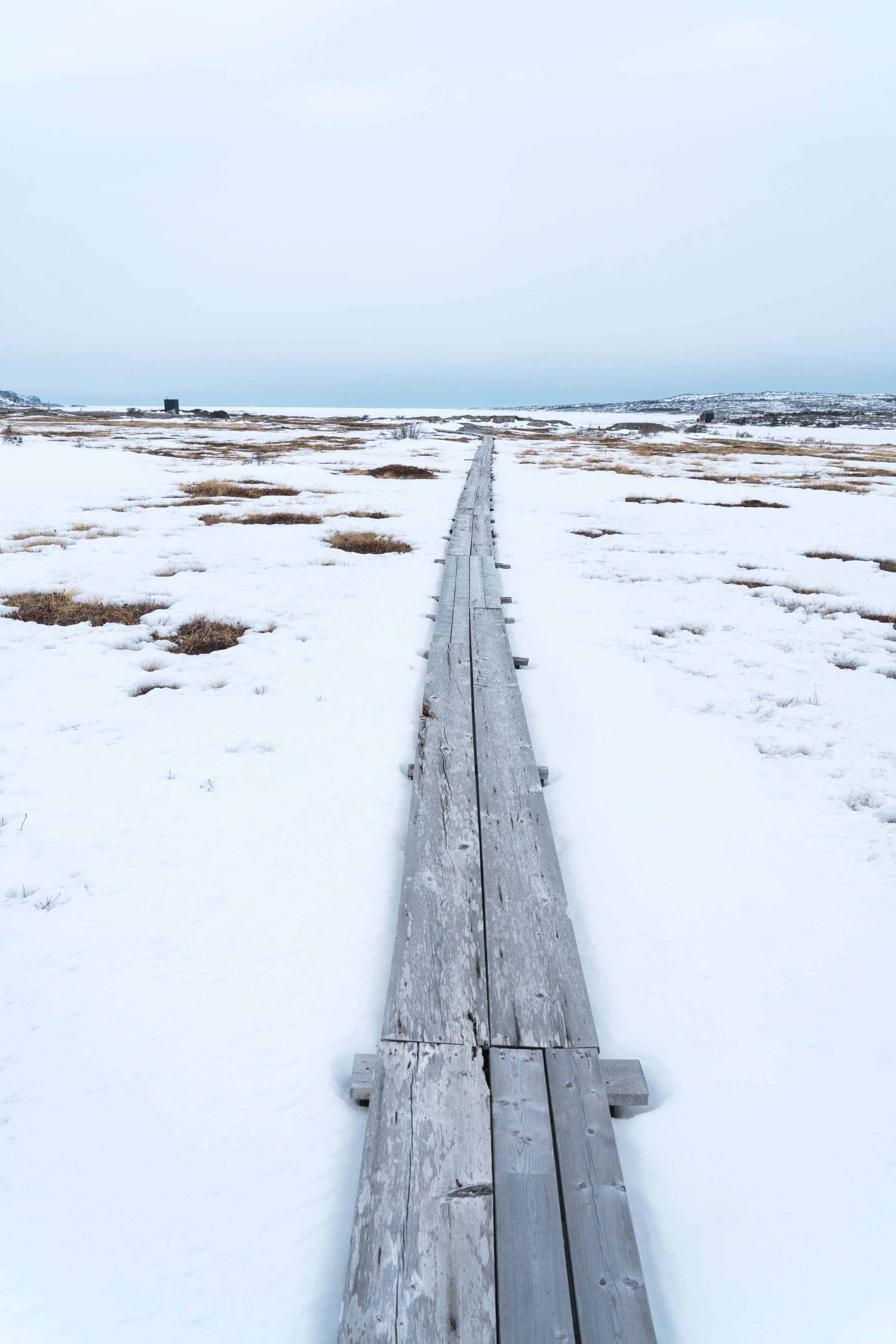
NEWFOUNDLAND
Newfoundland. An isolated little secret off the east coast of Canada considered so remote, the Flat Earth Society have labeled it to be one of the four corners of Earth. Barren and lonely, you’ll struggle to cross paths with another human, especially in the midst of winter enforcing an enlightened view of wilderness. The hardy souls you occasionally come across, have an accent so strong you sometimes question what language is being spoken. Their weather beaten faces have many stories to tell.
Newfoundland was once home to the Beothuk. As hunters and gatherers, the Beothuk crossed the sea ice from northern mainland Canada and utilised this island as a key summer fishing and hunting station. They co-existed at peace with the land for more than one thousand years living predominantly off salmon, caribou and seal. The second wave of people to arrive were vikings in the 11th century making Newfoundland the first European presence in North America. Saint John’s the provincial capital was also the first British settlement in North America and was established around 1520. Following the trend across most of North America, colonisation of this island saw severe injustices to the indigenous as well as introduction of disease and resulted in their extinction. The last known Beothuk, Shanawdithit, died of tuberculosis in St. John’s in 1829. In more recent years, Newfoundland has been raised to peoples radar through the titanic sinking after striking an iceberg off the east coast and a location where many planes were diverted to in the immediate moments after 9/11.
Newfoundland’s 420-million-year-old geologic history is in evidence everywhere and includes stunning contortions of rock formed by ice, fire, and sea. It is one of the few places on earth where you can see the full spectrum of the magma chamber exposed. When looking out to sea during certain times of the year one is faced with a horizon full of icebergs, large and small that have broken off the Greenland ice-sheet and slowly made their way south. When talking with a local fisherman, he described counting 92 chunks of ice from his house during a spring morning last year. As a result, the coast of Newfoundland has rightfully earned the name of “Iceberg Alley”.
Wildlife is abundant with large amounts of whales and puffins during the summer months and harp seals, polar bears and caribou over winter. Arguably one of the most important species that call Newfoundland home is North Atlantic cod (Gadus Morhua), which have been the backbone of Newfoundland’s economy and culture for centuries. Decades of international factory overfishing brought the cod to the brink of ecological extinction falling to only 1% of historical levels. As a result, a declaration of a moratorium (ban) on cod fishing was enforced in 1992 with the hope that it would give time for populations to recover and became the largest industrial closure in Canadian history. The closure of the fishery saw severe economic hardship fall upon the island with approximately 37,000 Newfoundlanders losing their livelihoods. Slowly, they have rebuilt with a diversion of focus to other industries including ecotourism.
I grew up listening to many stories of Newfoundland, both through my late grandfather who was born and raised here and through my Dad who spent hundreds of hours under the surface diving and recovering long lost shipwrecks in stormy, iceberg laden waters off the coast. This trip has been, in part, years of dreaming and in recent months, after the loss of my grandfather, a strong need to reconnect with my roots and pay tribute to him and the island he loved.
I feel incredibly privileged to have seen Newfoundland in all its glory to the point that it hurts leaving. It hurts because I know the next time I make it to these shores, the beauty of this wild corner will have evolved into something entirely different… Likely icebergs on steroids, polar bears swimming across open waters and floods of tourists. As epic as it was seeing these large chunks of ice, it was bittersweet. They are evidence of a melting Arctic and are something Newfoundland is going to see a lot more of in coming years.















